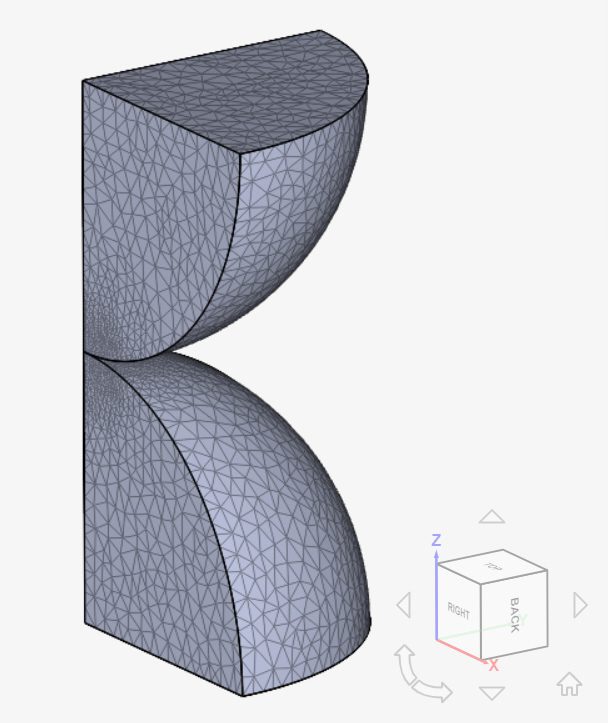Documentation
This validation case belongs to structural dynamics. The aim of this test case is to validate the following parameters at the point of the Hertzian contact between two spheres:
The simulation results of SimScale were compared to the results presented in [1].
Only one-eighth of each of the two spheres (with a radius of 50
Tool type: Code_Aster
Analysis type: Static nonlinear
Type of contact: Physical
Mesh and element types: The meshes were created with the standard meshing algorithm on the SimScale platform. While a single region refinement is used in the meshes (A) and (C), the meshes in (B) and (D) were created with an additional region refinement around the contact region.
| Case | Element Type | Number of Nodes | Element Technology |
|---|---|---|---|
| (A) | 1st Order Tetrahedral | 1559 | Standard |
| (B) | 1st Order Tetrahedral | 8229 | Standard |
| (C) | 2nd Order Tetrahedral | 34320 | Reduced Integration |
| (D) | 2nd Order Tetrahedral | 58973 | Reduced Integration |
Below the 1st order standard mesh for case A is visualized:
And the mesh (case B), which has a region refinement around the contact region is presented below:

Material/Solid:
Constraints:
Physical Contacts:
With equation (1) and equation (2) the stress at point D results in:
Comparison of the stress
| Case | Physical Contact | [SSNV104_A] (MPa) | SimScale (MPa) | Error (%) |
|---|---|---|---|---|
| (A) | Penalty | -2798.3 | -2834.34 | 1.288% |
| (A) | Augmented Lagrange | -2798.3 | -2836.32 | 1.359% |
| (B) | Penalty | -2798.3 | -2834.97 | 1.310% |
| (B) | Augmented Lagrange | -2798.3 | -2830.21 | 1.140% |
| (C) | Penalty | -2798.3 | -2875.45 | 2.757% |
| (D) | Penalty | -2798.3 | -2841.42 | 1.541% |
It is obvious from the table above that the best results were obtained with SimScale’s 1st order mesh (case B), using the Augmented Lagrange contact:
Last updated: September 24th, 2021
We appreciate and value your feedback.
Sign up for SimScale
and start simulating now